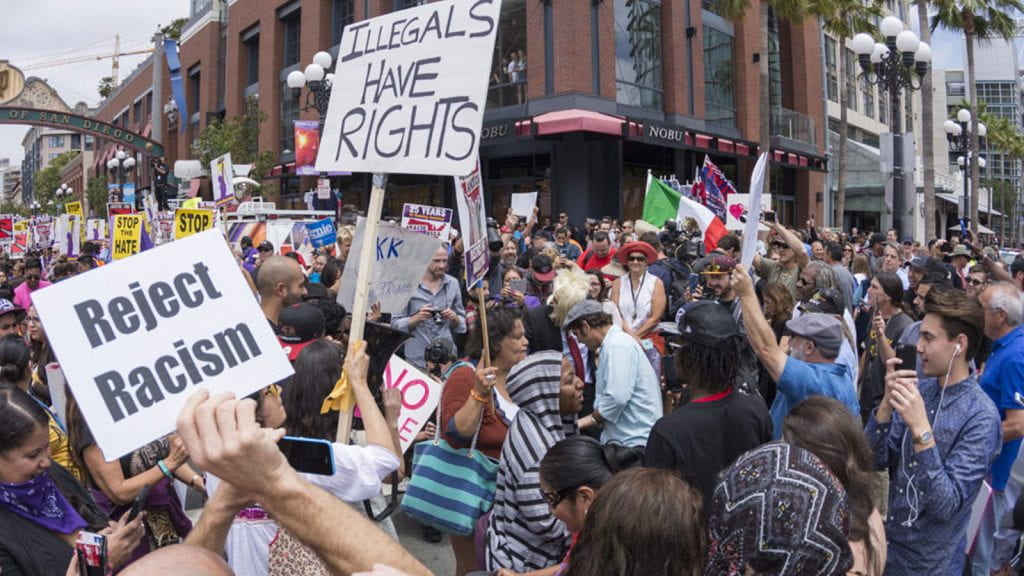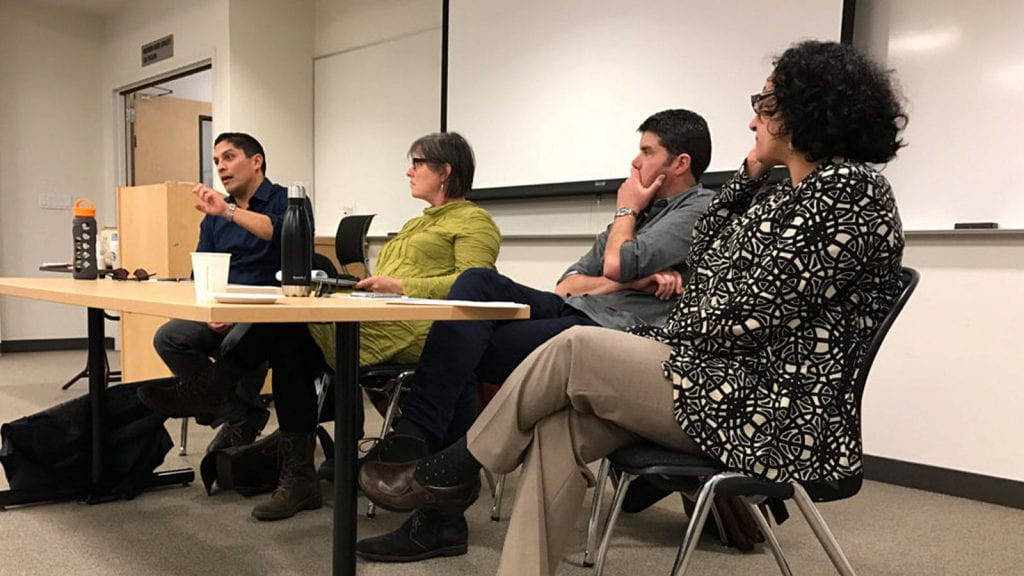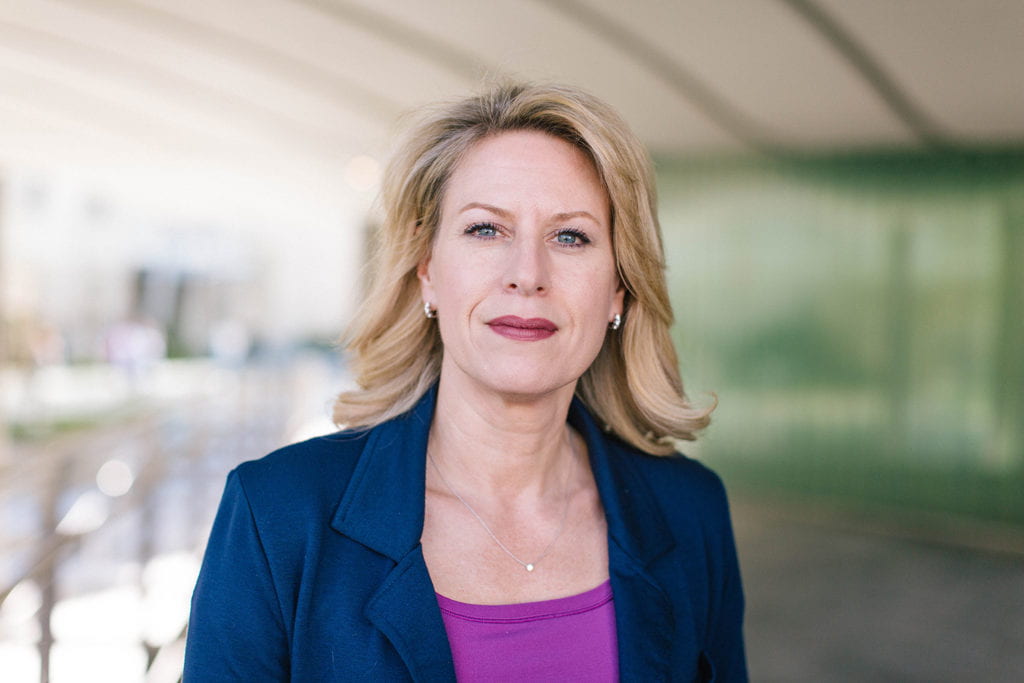In this blog, originally posted by the American Counseling Association, professor Christine Yeh identifies and discusses six specific ways to focus and strategize in your fight against injustices.

Since the inauguration, I have spoken to many colleagues and students who feel overwhelmed by the number of troubling and complicated issues emerging with the new Presidential administration. From the confirmation of Betsy DeVos for Education Secretary to the reinstatement of the Dakota Access Pipeline, there are clearly many injustices that must be fought. I have spent some time thinking about how to prioritize, strategize and focus and wanted to share some thoughts that I have gathered from a variety of sources. My full list is much longer but I will begin with 6 ideas.
Below are Six ways and focus and strategize in your fight against injustices
- Limit your news sources
- Invest in organizations that have a proven track record
- Understand the role of corporations in furthering problematic agendas
- Identify outlets to share your voice
- Prioritize and focus on specific issues
- Establish long and short term goals
Limit your news sources
It is easy to be inundated with real and fake news stories these days and sorting through the onslaught of social media newsfeeds and headlines can be both daunting and time consuming. Try to select a few trusted sources, rather than read everything that comes your way. I subscribe to NPR, New York Times, Huffington Post, and Washington Post and focus primarily on these sources. But I also have several specialized newsfeeds related to immigration rights, public education, the arts, and psychology that I also turn to for more detailed accounts. I also try to limit my engagement with social media to 2-3 tweets and Facebook posts a day, which allows me to keep informed and still connected with friends, without getting too much information. If you see something on social media that seems especially inflammatory (hard to tell these days), do your fact checking and always verify the information from the original source.
Invest in organizations that have a proven track record
Since we cannot fight all battles, I also believe in donating (in any amount) to several key organizations that have a demonstrated record of collectivizing supporters and using their resources to pursue key initiatives, policies, petitions, and lawsuits that are aligned with social justice efforts. For example, I supported the American Civil Liberties Union lawsuits and petitions which protested the confirmation of Sessions for Attorney General and the proposed Muslim travel ban. I also support the Southern Poverty Law Center’s work for LGBTQ rights, advocacy, and training. Of course, there are many other local and national organizations that are doing important work and many of these are specific to a particular cause. Do your research and ask around to see which organizations may best support your cause. If you can’t afford to donate right now, there are also many ways to donate time as a volunteer.
Understand the role of corporations in furthering problematic agendas
Many news reports have emerged that have highlighted which companies and businesses support or do not support different issues that directly and indirectly impact the proliferation of injustice. For example, Wells Fargo has been funding the Dakota Access Pipeline construction and the CEO of New Balance has been fund raising for Trump and the Trump family. I found a good list here that is continually updated. Of course many business connections are not so clear cut for some. For example, there are large department stores such as discount store, Ross, that sells the Ivanka Trump clothing line. Does the daughter’s clothing line also get boycotted? For me Trump has already demonstrated that his family businesses are at the core his own branding and success and further his own interests. This is especially problematic given Trump’s Top Advisor, Kellyanne Conway, publicly urged folks to “Go buy Ivanka’s stuff!” so I believe it is important to let retailers know that how and who they profit does matter.
Identify outlets to share your voice
There are many ways to be activist and to make a contribution so spend some time thinking about your strengths and capacities. Some of the most important social movements in history (such as the civil rights movement) have emerged due to our right to share our voices and fight for equity. This can take many forms. For example, signing and sharing petitions can be very effective, especially if you get large organizations (such as unions, universities, cultural organizations, etc.,) to back them. Making phone calls is also a very powerful way to share your perspective with elected officials and only take a few minutes a day. You can also volunteer to be a first responder to immigration raids targeting businesses and homes. I also strongly believe in the power of large protests and marches. For example, the CEO of Uber backed down from the Trump advisory council after just one day of strong protests in San Francisco and a viral #deleteuber campaign. He instead decided to donate 3 million dollars to support drivers impacted by Trump’s efforts to enforce a Muslim travel ban. I recently met a woman who felt very motivated to help but did not know how to use her skills as a busy doctor to further this work. She decided she could host meetings at her house, buy supplies (such as materials) to make signs for protests, support important organizations that are experiencing dramatic cuts federal funding (such as the arts, the environment, and public radio), and bring food to different events. She doesn’t identify as an activist but has found ways to support causes she cares about locally.
Prioritize and focus on specific issues
I know that I don’t have the emotional capacity to fight all the battles I care about but we can focus on the ones that we feel most passionately about while continuing to learn about targeted communities who are most impacted by the new administration. It is also important to consider how to use our unique skill sets as counselors and educators to address injustices as they continue to emerge. I’ve learned to focus on primarily being a scholar activist while also engaging in other forms of activism. Some areas to focus on may include (but are not limited to); conducting research to provide evidence to support your cause, scholarly writing (blog and op-ed pieces that spread the word about an issue), sharing petitions, providing and supporting others, doing trainings for allies, educational workshops, or community organizing. Find colleagues who share your passions and build on each other’s unique skill sets to meaningfully collectivize around an important cause.
Establish short and long term goals
Through all of this, remember to take breaks to care for yourself and those around you. If you have children or work with young people, it is important to meaningfully engage them in this process as well. It is also critical to establish short and long term goals and to continually assess resources around you. As the past month has revealed, it is hard to predict what new issues will emerge each day. Try to stay grounded, balance your personal and professional priorities, and focus on what really matters. Spend some time realistically setting aside time for the work you hope to do and schedule when you will do it. It may sound ridiculous but I created a schedule for myself to insure I do something each day. For example, this may mean reading news reports and engaging in limited social media in the morning, midday and evening. Making 10 minutes of phone calls in the morning to elected officials, using meals or coffee to hold strategy sessions or conference calls with colleagues, and reviewing petitions and scheduled protests or meetings at night. Try to develop long term goals in partnership with targeted communities, organizations, and colleagues. This may include writing a policy brief, developing ideas for op-eds, offering free counseling and support groups, or planning events to support public (versus charter or private) schools.
In all of this work, I have been most inspired when I am working in solidarity with colleagues and friends with a shared vision for equity.

